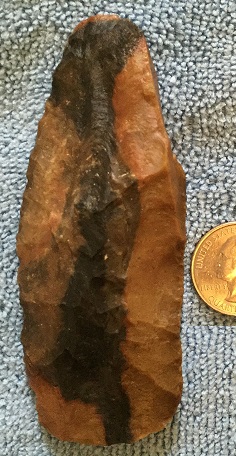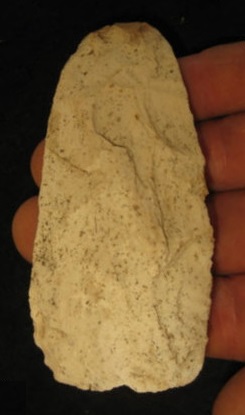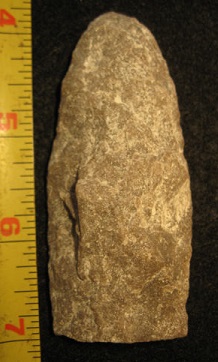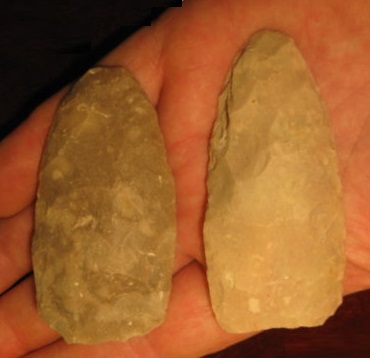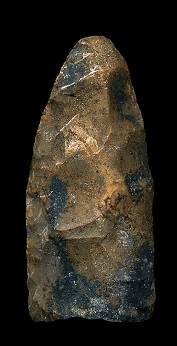Outline is Representative of Size and Shape:
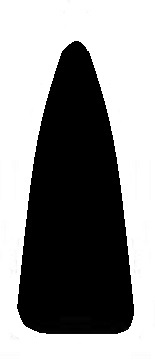

Name Details:
Identified By: Cyrus Ray
Named For: Clear Fork Gouge area of Texas
Date Identified: 1941
Type Site:
Identified By: Cyrus Ray
Named For: Clear Fork Gouge area of Texas
Date Identified: 1941
Type Site:
Point Validity:
Valid type
Ray was an orthopedic surgeon and an avocational archaeologist. He was an influential and well respected archaeologist with-in Texas archaeology. He founded the Texas Archaeological Society. He named this tool in a professional publication and has many professional references. This is considered a valid type.
Ray was an orthopedic surgeon and an avocational archaeologist. He was an influential and well respected archaeologist with-in Texas archaeology. He founded the Texas Archaeological Society. He named this tool in a professional publication and has many professional references. This is considered a valid type.
Clear Fork Gouge
Cluster: Description of Physical Characteristics and Flaking Pattern:
This is a thick medium to large (1.6 to 3.5 inches) triangular to sub-triangular gouge. The blade may vary from straight to excurvate. One edge has a gouge like cutting edge while the other edge may have percussion or pressure flaking. This gouge is generally bi-facially flaked, but may only have unifacial flaking. The base may vary. This gouge has a random flaking pattern.
Size Measurements:
Total Length - 37 to 110 mm, Width - 30 to 45 mm
Total Length - 37 to 110 mm, Width - 30 to 45 mm
Commonly Utilized Material:
Additional Comments:
The purpose of this tool is not fully understood. It appears that this tool was used by pushing or pulling across a wood working plane. This is based upon the wear pattern on the surface behind the gouge cutting area. It is speculated that the smaller examples may have been mounted on a handle.
The purpose of this tool is not fully understood. It appears that this tool was used by pushing or pulling across a wood working plane. This is based upon the wear pattern on the surface behind the gouge cutting area. It is speculated that the smaller examples may have been mounted on a handle.
Distribution: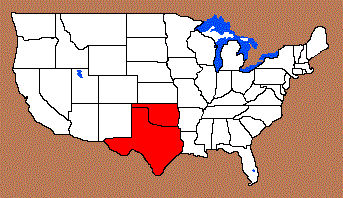

Distribution Comments:
This point is primarily found in plains region of Texas and into Oklahoma.
This point is primarily found in plains region of Texas and into Oklahoma.
Age / Periods:
Date:
Cultural Period:Archaic
Glacial Period:
Culture:
Date:
Cultural Period:Archaic
Glacial Period:
Culture:
Age Details:
Similar Points:
Covington, Darl Blade, Friday, Gahagan, Kinney, Mineral Springs, Sabine, San Gabriel
Covington, Darl Blade, Friday, Gahagan, Kinney, Mineral Springs, Sabine, San Gabriel
Other points in this cluster / Related / Associated Points:

